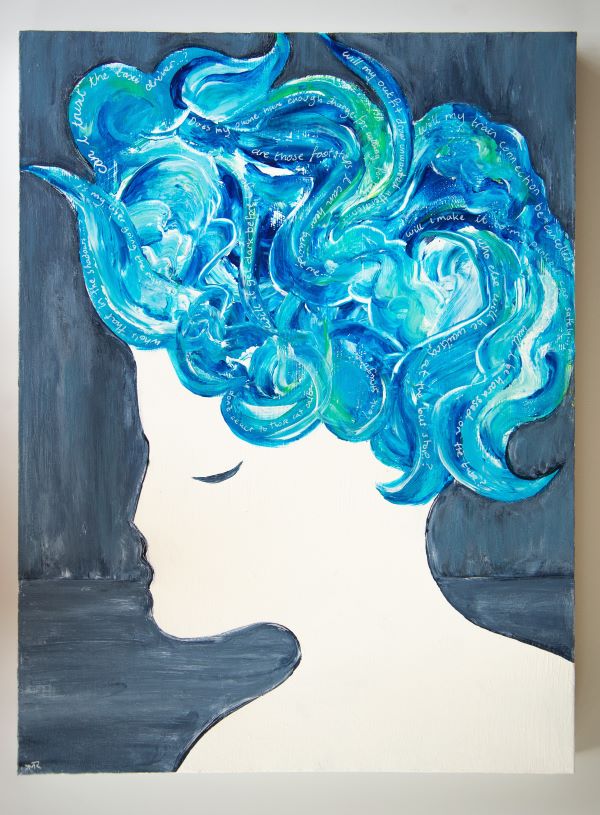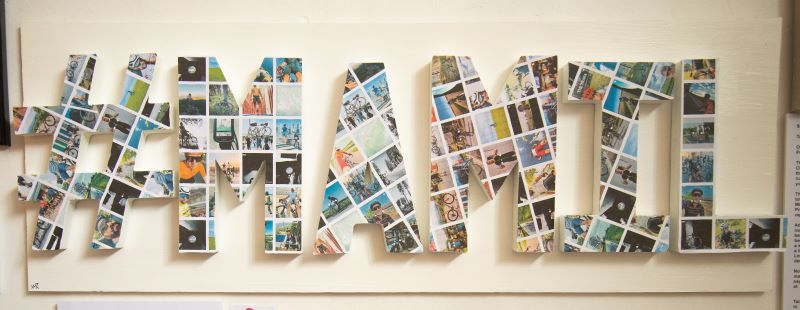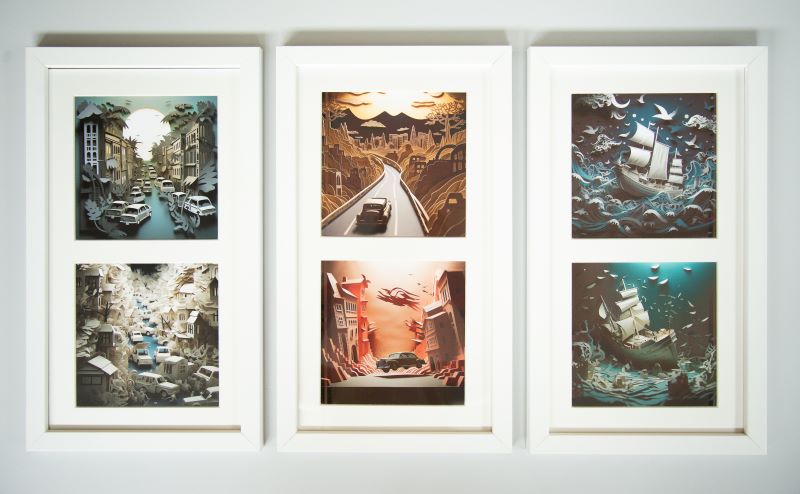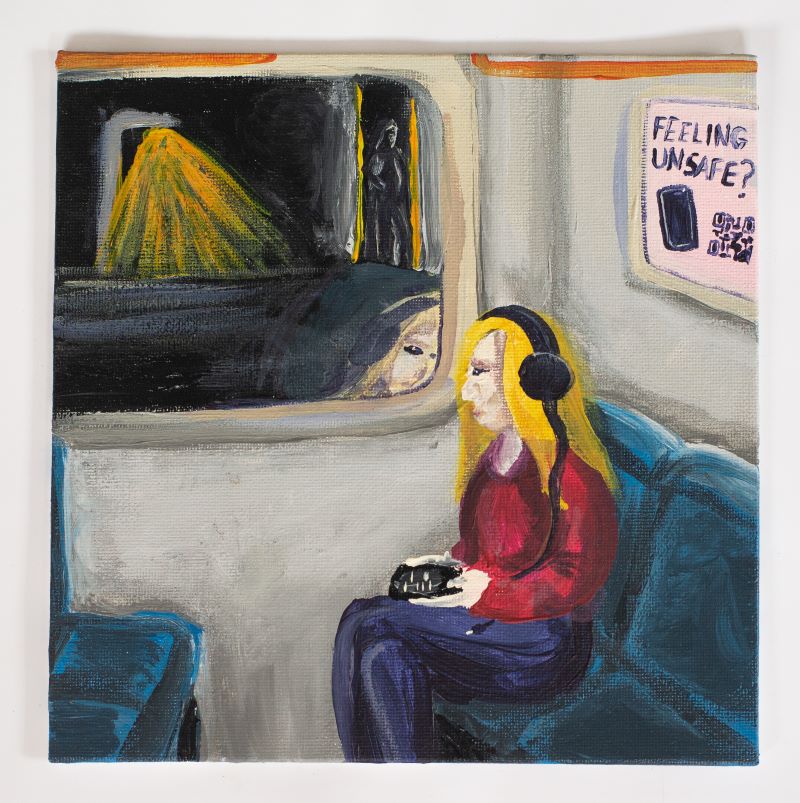Words by Sarah Groszewski. Photos by Mollie Knight. Main image: Last Train Home by Annie Farthing.
I’m a feminist with big opinions about transport, so when I heard about ‘Lost in Transit: Finding gendered journeys through art and technology’ I couldn’t wait to visit.
Lost in Transit is an exhibition curated by Close the Data Gap, a group of Researchers from the Transportation Research Group at the University of Southampton who aim to create a fairer world by closing the gender gap in transport research. Their work is inspired by the book ‘Invisible Women’ by Caroline Criado Perez.
The exhibition considers the themes of gender and mobility, showcasing work in various media. The really interesting thing about this exhibition is that the call for submissions talks about people making journeys that involve some aspect of technology, but the majority of the work focuses on the safety of women using transport. This reflects my feelings that using transport – or not – and therefore the choice between going somewhere or not, can be a choice that troubles many women.

The exhibition starts with Joy McKay’s model of a graffiti covered train station waiting room that has been closed down ‘for safety’, and reflects the fact that transport press often focus on crimes such as graffiti and ignore the emotions this can evoke; in this instance isolation and fear.
The next piece spoke of the artist’s frustrations at having to second guess their outfit before making a journey. If something happened to them, would their outfit scream that they were ‘asking for it?’ I can think of many, many cases in the last year where women have been assaulted or murdered and the press scrutinized their outfits or their actions so this is by no means an isolated concern. In 2022 the hashtag #SheWasGoingForARun sparked backlash because Ashling Murphy may only have been going for a run when she was brutally murdered, but she shouldn’t have been murdered regardless of what she was doing. This piece reflects this judgement and victim blaming of women for their dress, as though somehow they may be less deserving of violence if there is less skin showing.
Next we see a series of QR codes that reveal animated GIFs representing the lack of consideration for pedestrians, queer culture, and the relationship between AI and emotions while completing a journey.
As someone who loves words I was intrigued by a decoupage #MAMIL piece, that detailed the dichotomy between the negative connotations of the term MAMIL (middle aged men in lycra) and the sense of camaraderie and community that the MAMILS themselves experience. I really identified with the poem written about annoyance with other transport users and laughed to myself when I reached the end.
We see painted representations of the violence that occurred at the Sarah Everard vigil, the complex set of choices involved in choosing a safe route down which to complete the school run, the mental load that women have to undergo to travel safely, and photographs representing the judgement they face when they do something perceived as personal (make up application) whilst travelling. A knitted piece shows the challenges that those who are unable or choose not to use technology face in accessing transport.
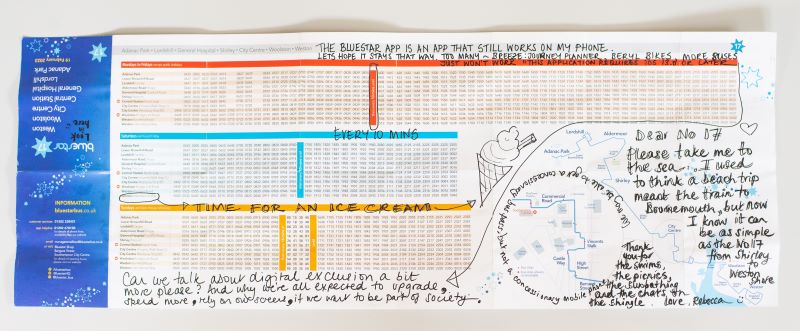
The exhibition is well curated, showcasing striking art with a serious message and drawing attention to the intersection between gender and mobility. I visited the exhibition with my step mum and it prompted a really interesting conversation about how my dad uses a local shortcut that I don’t even know about because using shortcuts is an alien concept for many women.
As a mother, I was surprised not to see more about the complexities of travelling with children. My dissatisfaction with the state of transport started as a new mother, travelling with a buggy, then later a double buggy. How can it be that buses can accommodate a buggy OR a wheelchair? Why do so few train and tube stations have accessible entrances? Where have the snack carts gone? When travelling with children you often need an emergency bottle of water or a snack so these were a godsend. The interrelation between transport and children is a precision operation – a delayed train can mean the difference between having enough nappies and milk, or a screaming baby. I have to drive to work because transport between my house and the children’s school doesn’t exist. To walk I would need either extended childcare provisions or a more flexible job (there are few jobs more flexible than mine, and the 5 minute commute is a big factor in my choice of employment).
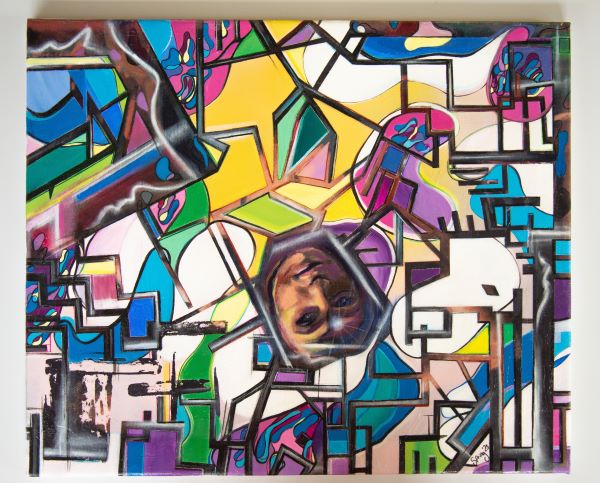
There was also no mention of cost. The gender pay gap unfortunately still exists, and transport is expensive. It cost over £5 to travel along Shirley high street with the children after school in order to make it quickly to the garage to collect my car before it closed, which is completely unaffordable for many people. The need to save money can lead to women making dangerous travel decisions.
Maybe I should pick up my paintbrush…
- Lost in Transit is on display at October Books in Portswood until the 31st July, moving to the Level 4 Gallery, Hartley Library from 7-31st August 2023. If you would like to collaborate or join the Close the Data Gap group you can get in contact: CtDG-info@groups.soton.ac.uk or kirstenmadeirarevell@gmail.com and you can find out more at closethedatagap.soton.ac.uk
- In Common is not for profit. We rely on donations from readers to keep the site running. Could you help to support us for as little as 25p a week? Please help us to carry on offering independent grass roots media. Visit: https://www.patreon.com/incommonsoton
